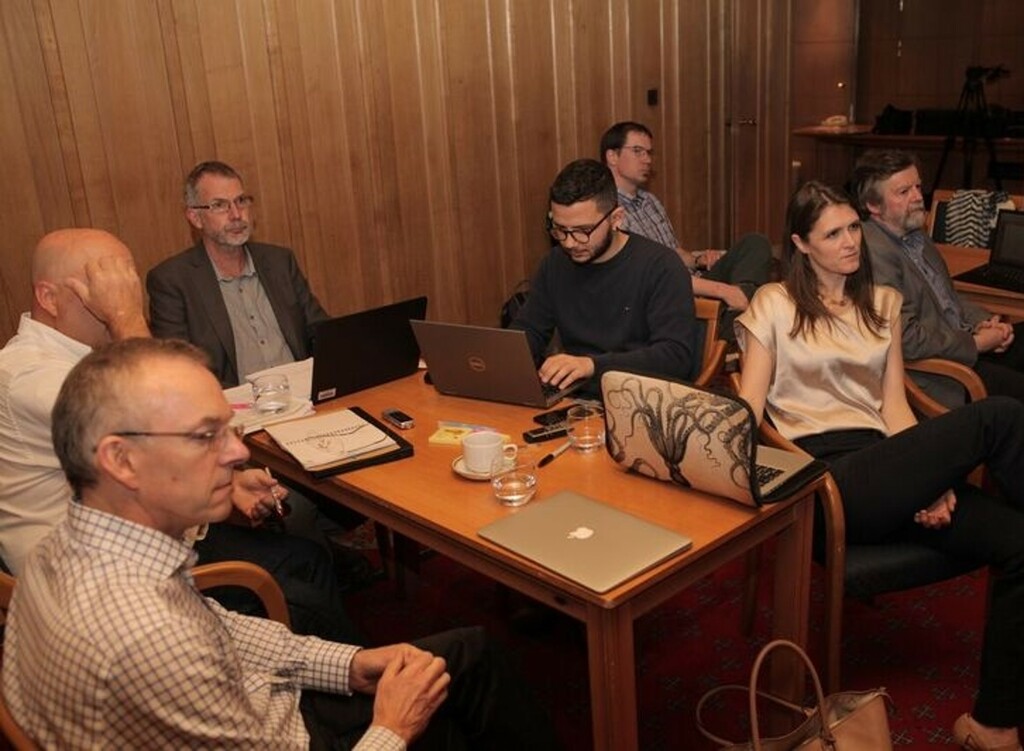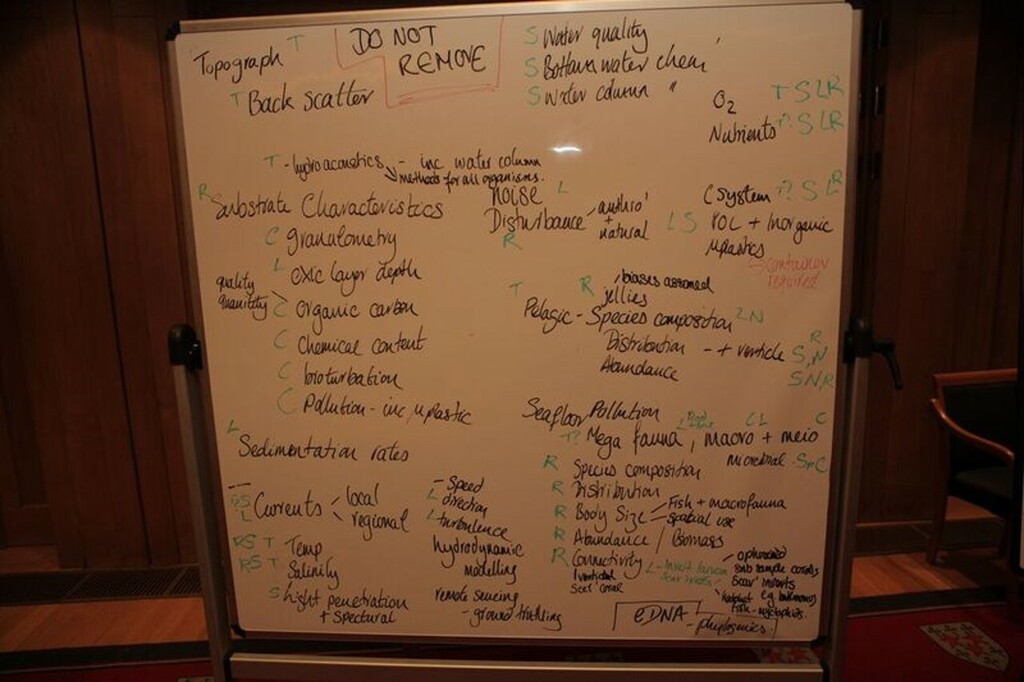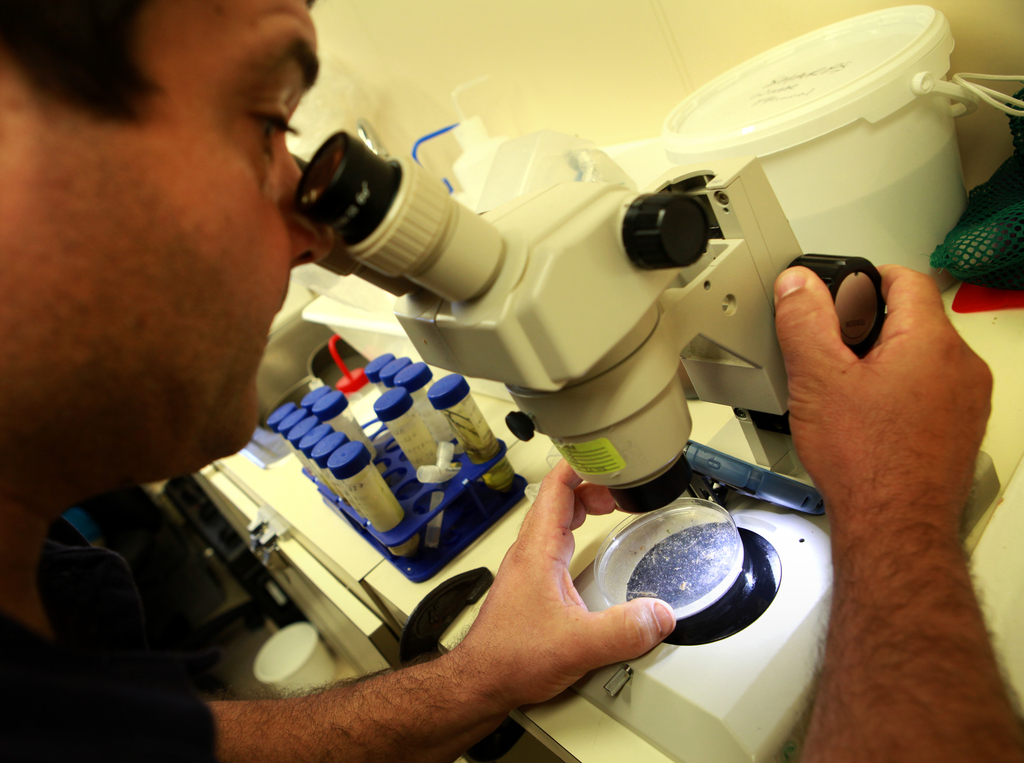Behind the science:
A multidisciplinary approach for generating globally consistent dat...
2018, December 12
Posted by Veronica Radice
Fields
Methods and Technology
“Generating globally consistent data on mesophotic, deep-pelagic, and bathyal biological communities”
What are the challenges in the field that drove your working group to propose this framework?
The framework was conceived in recognition of the fact that we do not have the appropriate amount and types of data to start to answer some of the most important broad scale questions of marine ecology. Of course the reasons for these data gaps are many. But this does mean every measurement, sample and data point is important as is every opportunity to collect such information. As we all know data from waters below SCUBA depths are limited. This is in part due to the remoteness and vast size of the ocean, and therefore the logistic challenges and resource constraints that are ever present when undertaking ocean research. In addition we often face the challenge of data that are not comparable.
Why is the interdisciplinary approach important?
We hope that this standardized and multidisciplinary approach will galvanize long-term and multi-site research that can start to answer some of the most challenging, intractable, and complex questions about the marine environment. Working in collaboration with experts from across disciplines is something we all do, but the GOSSIP framework provides a formalized way to help prioritise data collection.
Considering the challenges of measuring marine biological parameters, which parameters are possible to sample in mesophotic reef environments when working with limited equipment?
All parameters presented can be collected at all depths, however, this is limited by the way we work, for example the type of sampling platform, distance from land and length of time in the field. Assuming most mesophotic reef researchers utilise small boats that transit daily to survey sites the following parameters (with associated parameter number) might be the easiest to collect data and samples for. Pelagic: Microbial communities (4), Census of associated biota (5) Benthic: Mesophotic hyperbenthos (7), Epibenthos (8), Infauna (9) Environmental drivers: Seafloor composition (11), Current velocity (12), CTD parameters (13), Dissolved Oxygen (15), pH (16) Socio-cultural aspects: Human use (18), Records of litter and damage (19), Microplastic and other pollutants (20) Some of these parameters can be collected but require additional equipment such as sensors (12-16), hand push cores (9, 11 and 20) water containers (4 and 20), however others can be surveyed using no additional equipment (5, 7, 8, 18 and 19), assuming the mesophotic reef surveys are collected with a diver team taking video.
Does the framework envision an open access data repository for the parameters? How can existing datasets or databases be integrated into this proposed framework?
In the technical manual we will be presenting some of the open access databases that are appropriate for each of the parameters. Open access databases are the easiest way for all of us to find and use data, and so this aspect is a very important part of the framework.
Other than your co-authors, with whom would you like to share credit for this work?
This work really needs to acknowledge all previous and current collaborators of all co-authors. The paper that introduced GOSSIP is only the first stage of this project and for it to be useful the parameters and details about them may need to be updated. Therefore we should probably also credit future collaborators!
What is the next step for this proposed framework?
To accompany the paper we are currently working on a technical guide that will provide details on each of the twenty parameters that have been identified in the paper. This technical guide will include the equipment need for the sampling, data collection and storage of samples, examples of data format, details of data analysis and top tips. In addition the framework is being shared with the marine research and policy community, in the hope it will enable further multidisciplinary collaboration to advance ocean knowledge.
Featured article:
|
|
A multidisciplinary approach for generating globally consistent data on mesophotic, deep-pelagic, and bathyal biological communities | article Woodall LC, Andradi-Brown DA, Brierley AS, Clark MR, Connelly D, Hall RA, Howell KL, Huvenne VAI, Linse K, Ross RE, Snelgrove P, Stefanoudis PV, Sutton TT, Taylor M, Thornton TF, Rogers AD (2018) Oceanography 31:76-89 |
|

_Nekton_2018_b.jpg)

_Nekton_2018.jpg)
